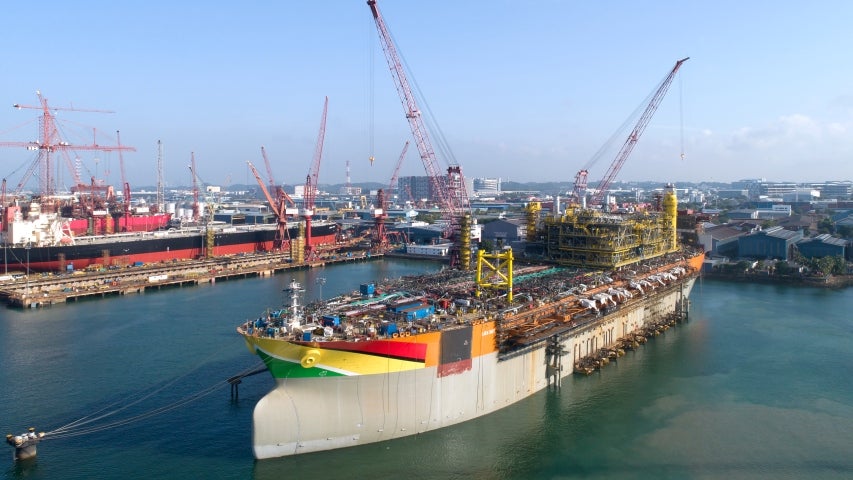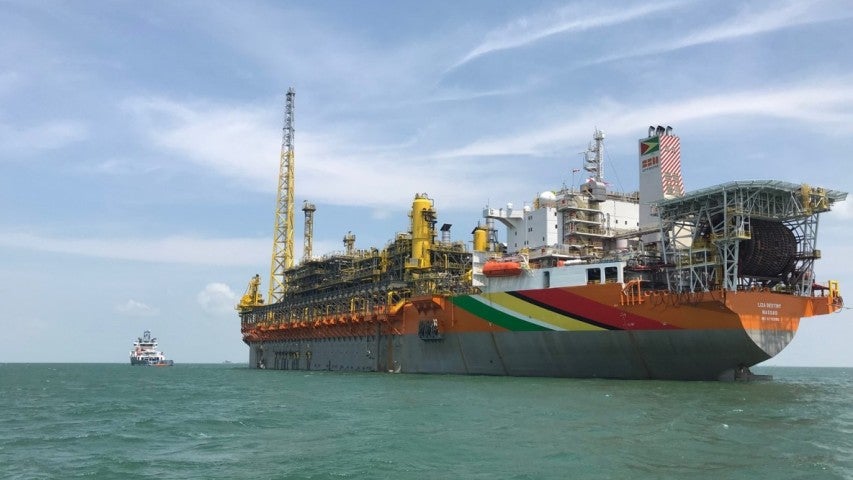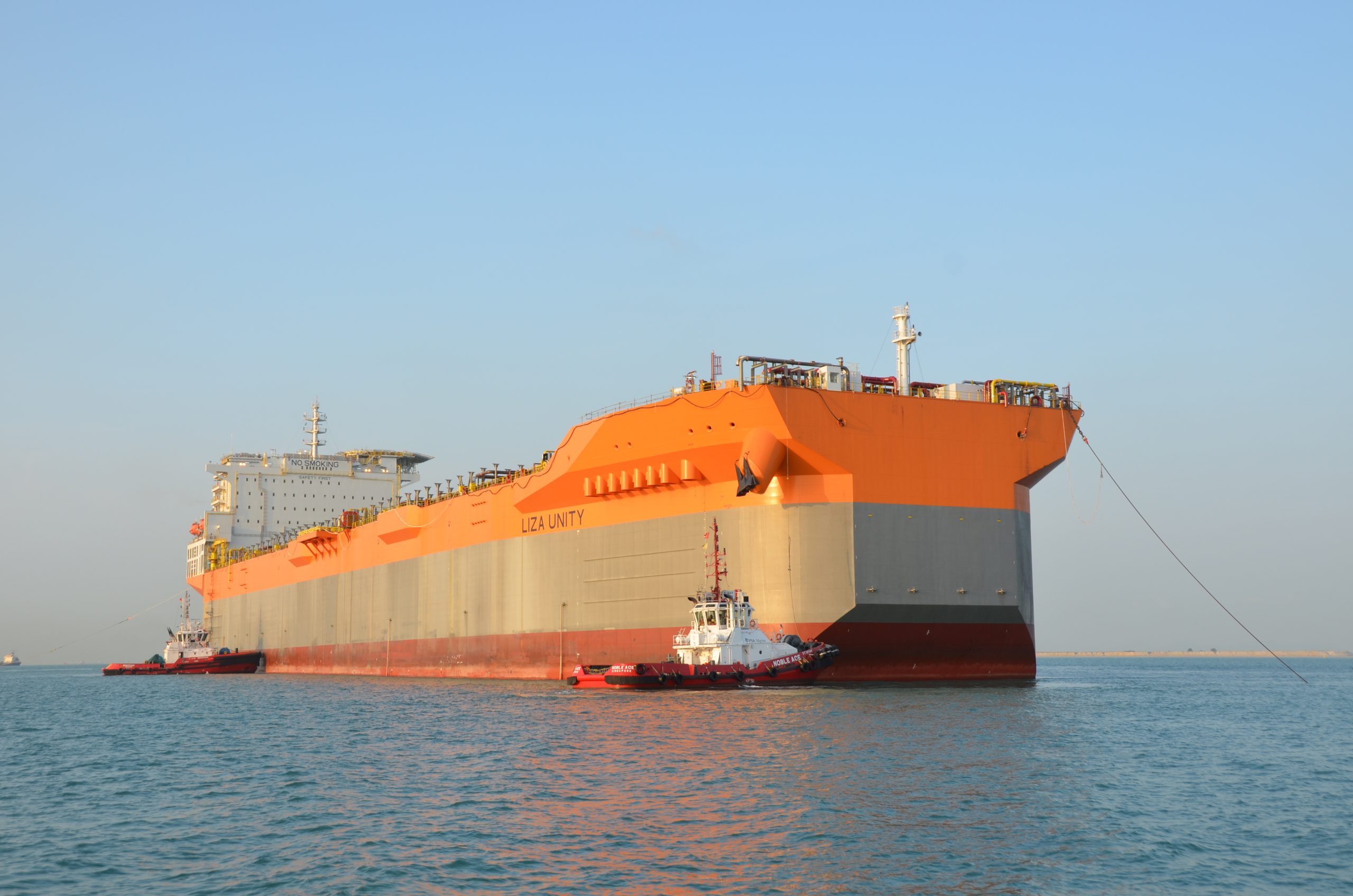The Liza prospect is located approximately 120 miles (193km) offshore Guyana in the Stabroek block, which is operated by ExxonMobil affiliate Esso Exploration and Production Guyana.
Esso Exploration owns 45% interest in the block while Hess Guyana Exploration owns 30% and CNOOC Nexen Petroleum Guyana owns the remaining 25%.The Liza prospect is being developed in phases. Esso Exploration submitted a plan for phase one of the field’s development to Environmental Protection Agency (EPA) Guyana in August 2016.
The EPA issued an environmental permit and the Ministry of Natural Resources issued a production license for the Liza field in June 2017. The final investment decision for phase one was made during the same period.
In March 2019, Esso Exploration received the required regulatory approvals and reached the final investment decision (FID) to begin the phase two development of the Liza Field.
Phase one of the project involves an investment of approximately $4.4bn and the phase two is expected to cost approximately $6bn.
First oil production from phase one began in December 2019 and production for phase two is due in 2022. The production from the first phase is expected to peak at 120,000 barrels of oil per day.
Liza prospect location
The Liza prospect lies in the Stabroek block, which is spread over an area of 26,800km² (6.6 million acres) offshore Guyana.
The Guyana Basin is a relatively unexplored area and very few drilling activities have been carried out to date.
Previous exploration activities in the basin were carried out by other companies outside the southern boundaries of the Stabroek block in the 1970s.
A total of 22 wells were drilled in the area, which all proved non-commercial.
Despite the earlier unsuccessful drilling activities, initial seismic data and geologic analysis indicated the presence of oil and gas plays in the block.
Based on this data, Esso Exploration commenced drilling activities in the Stabroek block, becoming the first company to drill in the area since the 1970s.
Geology and reserves
The Stabroek block contains sediments of Amazonian origin, which were deposited by the Guiana Current.
Seismic data collected in the region indicated the presence of multiple play types, including Cretaceous and amplitude-supported plays containing stratigraphic on-laps, turbidites and basin floor fans.
The Liza prospect is estimated to contain recoverable reserves of more than six billion barrels of oil equivalent. The Starbroek block is expected to produce more than 750,000 barrels of oil equivalent per day, using at least five floating, production, storage and offloading (FPSO) units by 2025.
Liza prospect appraisal and well details
Oil in the Stabroek block was discovered with the drilling of the Liza-1 well in May 2015, which encountered more than 295ft (90m) of oil-bearing sandstone reservoirs.
The well was drilled by the Deepwater Champion 120 drillship.
In June 2016, Esso Exploration drilled a second well known as Liza-2 approximately two miles (3.3km) away from the Liza-1 well in order to appraise the field.
The well was drilled to a depth of 17,963ft (5,475m) by the Stena Carron drillship and encountered 190ft of oil-bearing sandstone reservoirs.
ExxonMobil performed an extensive 3D seismic survey covering an area of 6,500 square miles, following the drilling of Liza-2. Two seismic vessels were used to collect the data.
Based on the seismic survey, a third appraisal well Liza-3 was completed in September 2016.
The well confirmed the commercial viability of the Liza prospect.
A fourth appraisal well Liza-4 was drilled in March 2017. It encountered more than 197ft (60m) worth of high-quality oil column.
In 2018, a fifth appraisal well Liza-5 was drilled by the Stena Caron drillship. The well was tested and proved reserves in the northern part of the Liza field. The discovery at Ranger is expected to support the third phase of the field development.
Phase one field development of Liza prospect
The phase one of the Liza field development project is located in about 1,500m to 1,900m deep water, approximately 190km offshore Guyana. It contains 17 subsea wells, including eight production wells, six water injection and three gas injection wells supported by four undersea drill centres.
Clustering the wells around the drill centre is expected to help reduce the number of umbilicals, risers and flowlines required for the development.
The wells are connected to a spread-moored FPSO vessel Liza Destiny via subsea umbilicals, risers and flowlines, ranging from 3.6km to 6.6km in length. The FPSO is located approximately 193km off the coast of Guyana.
An existing double-hulled very large crude carrier was converted for use at the field.
The FPSO vessel includes topside facilities, which can process fluids from the production wells at the rate of 120,000 barrels of oil a day (bopd).
Its hull has the capacity to store 1.6 million barrels of processed crude oil, which is periodically offloaded onto conventional tankers.
Phase two field development of Liza prospect
The phase two development of Liza Field covers a total of 30 wells, including 15 production wells, nine water injection and six gas injection wells, supported by six drill centres.
The second FPSO Liza Unity with the production capacity of up to 220,000 gross barrels of oil per day will be used for the development. It will be moored at a water depth of 1,600m, along with subsea equipment, umbilical, risers and flowlines.
It will also have a gas processing capacity of 400 million cubic feet per day and water injection capacity of 250,000 barrels per day.
The FPSO will have a storage capacity of two million barrels of crude oil.
Contractors involved
Seismic data specialist Spectrum supplied 2D seismic data for the evaluation of the Liza prospect.
SBM Offshore was awarded the construction, installation and operation contract for the Liza Destiny FPSO vessel.
The company was previously contracted to provide front-end engineering and design (FEED) services for the FPSO.
TechnipFMC was awarded the engineering, manufacture and delivery contract for subsea production system equipment for phase one while Saipem is providing the engineering, procurement, construction and installation services for the subsea umbilicals, risers and flowlines.
Guyana Shore Base is providing shore base services while a drilling services contract was awarded to Noble Corporation.
The company deployed its Noble Bob Douglas drillship under a three-year contract, which started in 2018.






